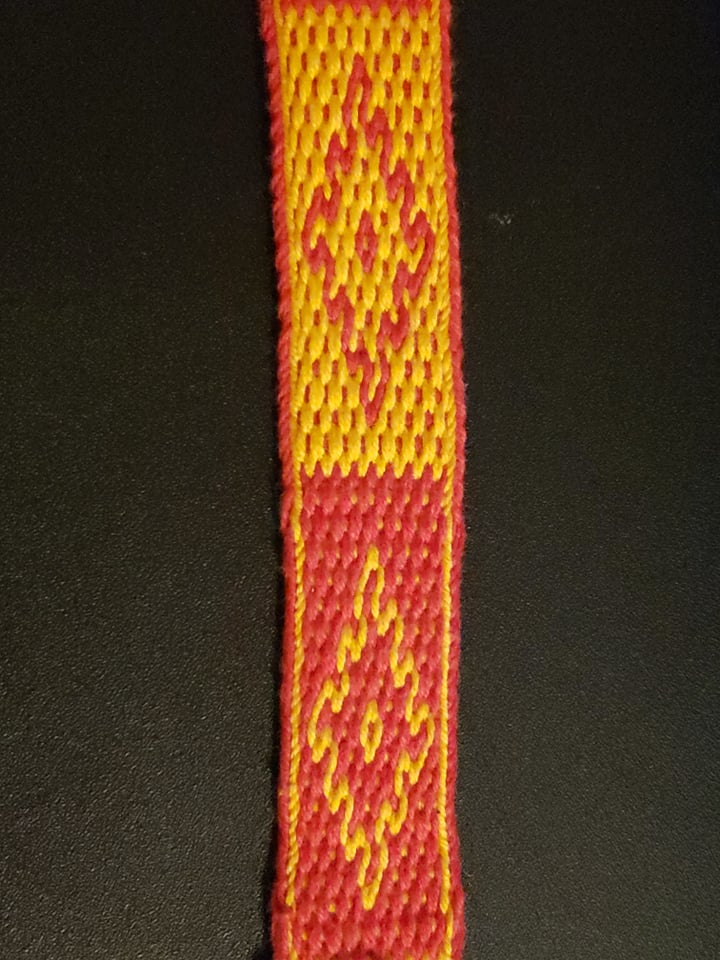
The Hochdorf Chieftain’s Grave is a richly-furnished Celtic burial chamber found near Hochdorf an der Enz in Baden-Württemberg, Germany, dating from 530 BC in the Hallstatt culture period. This is the same time period we also find the woven pieces in the salt mines of Austria that I shared with you a few weeks ago.
Most of the time, we think of Celts being almost exclusively in the British Isles, but that isn’t the only place where this cultural group was found 2500 years ago. The Celts are a collection of Indo-European peoples in parts of Western Europe that included modern day Poland, Germany, France, Italy and Spain, as well as the British Isles. There were also tribes of Celts that expanded as far East as Romania and Turkey.

They are identified by their use of the Celtic languages and other cultural similarities. They had no written language, so there is a lot we don’t know about how they expanded so far and why their culture died out everywhere except for the British Isles, remaining most notably in Ireland and Scotland. Many of the people were assimilated into the local cultures where they lived, logically, but it was the Romans that had the biggest influence of defeating the Celtic peoples throughout most of Europe, and only in pockets of the UK were the Celts able to hold back the Roman armies and maintain their culture and traditions long after the Romans left.
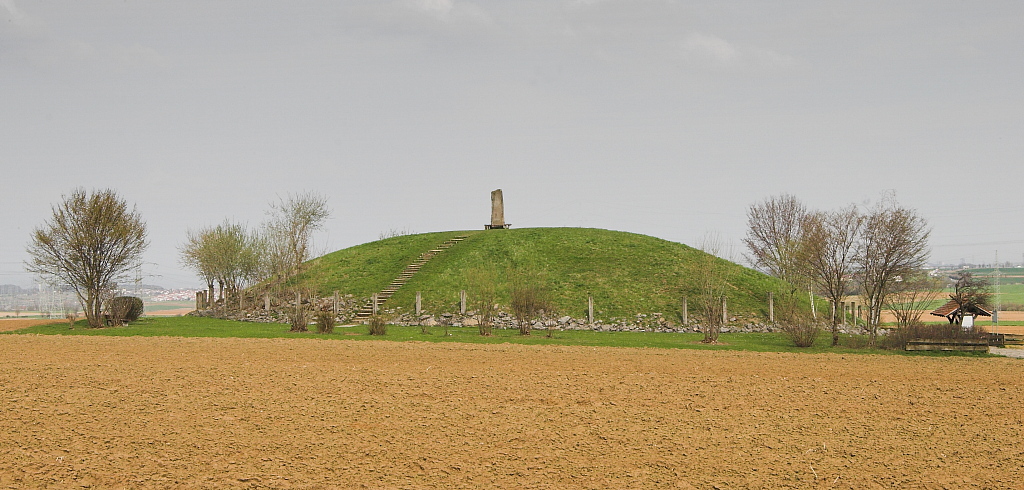
The burial chamber at Hochdorf dates to 520 to 530 BC. It was discovered in 1968 by an amateur archaeologist and excavated 10 years later from 1978 to 1979. By then, the burial mound covering the grave, which they estimate to have been originally 6 m (20 ft) in height and about 60 m (200 ft) in diameter, had shrunk to about 1 m (3 ft) in height due to centuries of erosion and agricultural use.
To completely dispel the myth that the Medieval people were all short and died young, the man found inside the chamber was roughly 6 ft 2 in (187 cm) tall and died at the ripe old age of 40. OK, 40 is young…but six feet TALL! Holy moly!
So this giant of a man, who they determined was a chieftain of a nearby village, was laid out on an a fantastic 9 ft (275 cm) bronze couch with eight wheels inside the burial chamber. He had been buried with a gold-plated torc on his neck, a bracelet on his right arm, a hat made of birch bark, a gold-plated dagger made of bronze and iron, amber jewelry, a razor knife, a nail clipper, a comb, fishing hooks, arrows, and most notably, thin embossed gold plaques which were on his now-disintegrated shoes. At the foot of the couch was a large cauldron decorated with three lions around the brim. This cauldron was originally filled with about 100 gallons (380 litres, or 666 pints) of mead. That’s a party for the afterlife! The east side of the tomb contained a wooden four-wheeled wagon with iron-plating holding a set of bronze dishes—along with the drinking horns found on the walls enough to serve nine people. The items found are kept at the museum Alte Schloss in Stuttgart.
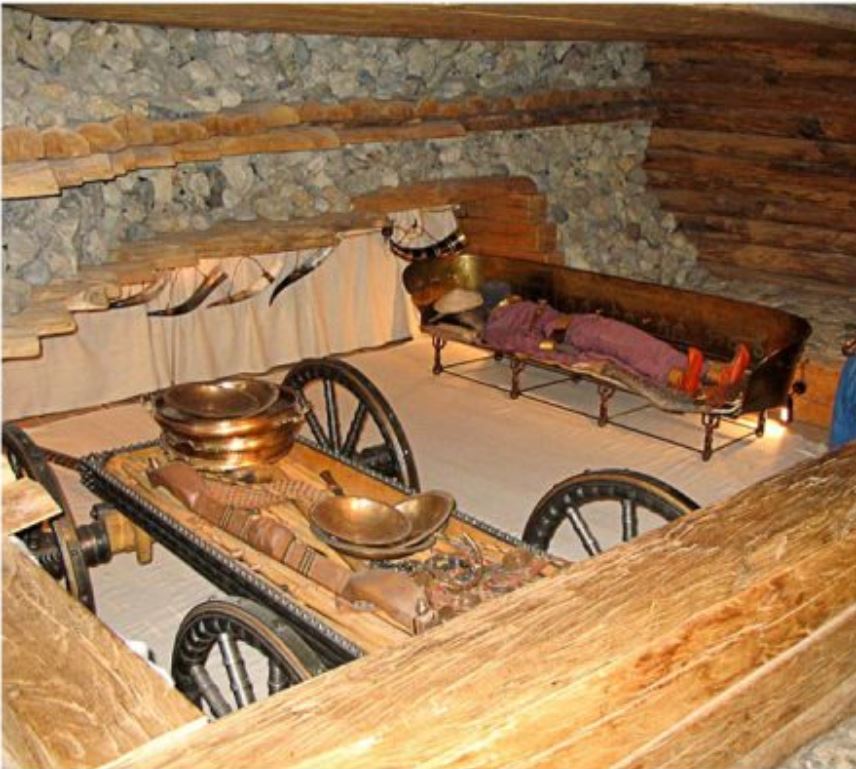
The burial mound has been reconstructed for the museum with replicas of all the goods that were found to really give us a visual understanding of what ancient grave sites looked like, how it was laid out and just how dang impressive it was with all the items that were buried with those who had passed on. During the construction of the museum’s burial mound, the foundations of an ancient Celtic village were found, more than likely the one to which the chieftain belonged. These were, of course, incorporated into the museum. So in the building of the museum’s display for the Celtic Chieftain, they accidentally found his village. Some things are meant to be…and now he’s home. 😀
This dig was featured in a series called The Celts: Rich Traditions and Ancient Myths…and it’s on YOUTUBE!
https://www.youtube.com/watch?v=AU1dKfMIEUQ&list=PL_Y6Qui9KStOQ9rVrBzOLkJO8hNiDtl8c

In addition to all the riches, there were several pieces of tablet weaving found both on the wall hangings and other textiles. Dr. Johanna Banck-Burgess analysed the textiles and wrote her disertation on the research of the preserved textiles (Johanna Banck-Burgess: Hochdorf IV. Stuttgart 1999). You can read a little bit about Hochdorf IV here: http://tabletweaving.dk/wordpress/wp-content/uploads/2015/03/Hochdorf-IV-bidrag.pdf. Hochdorf IV (object 1.42) is really complex…A reconstruction was woven using 98 tablets, and 6 cm wide using very fine thread. This is a life goal for me…
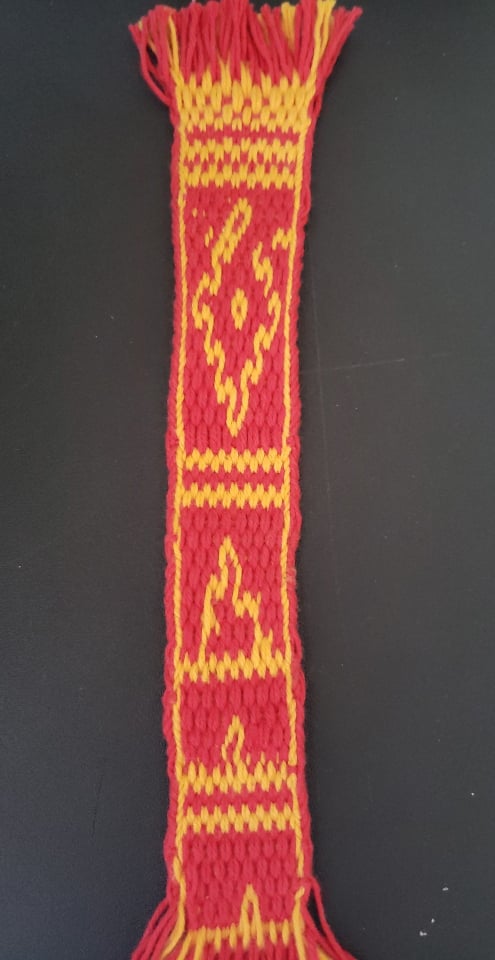
The piece we’re going to look at today is this significantly simpler, jagged diamond piece called Hochdorf 39. This tablet woven border edged one of the wall hangings in the tomb and was made using the skip hole method. I’ve made it once before and it took several tries, three patterns, phoning a friend, and a lot of swearing it get it to work. Hopefully I can show you how to do this in a way that doesn’t cause you to curse like a sailor. If you’ve been weaving along with me, you’ll be familiar with this technique now, so you know what you need. (pencil)

Note: this is not a twist-neutral pattern, but I suspect that you can weave in reverse, as I showed in a previous video. Flip all your cards (S to Z or Z to S), and start weaving from line 32 (or 36–wherever you start) and work your way down to row 1.
We’re getting down to the last few Kingdoms in our Laurel Kingdoms project. This time we’re celebrating the Kingdom of Æthelmearc was created in 1997 from the Kingdom of the East. It covers northeastern/central/western Pennsylvania, central/western New York, and West Virginia. Their colors are gules, argent and or. That’s silver, red, and gold, for the non-heralds out there…or white, red and yellow, if your hoards of precious metals are depleted. It’s been a long, lean year….
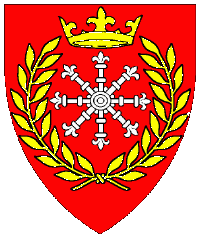
This is a biggun…you’ll need 36 cards for this thing. Ready?

